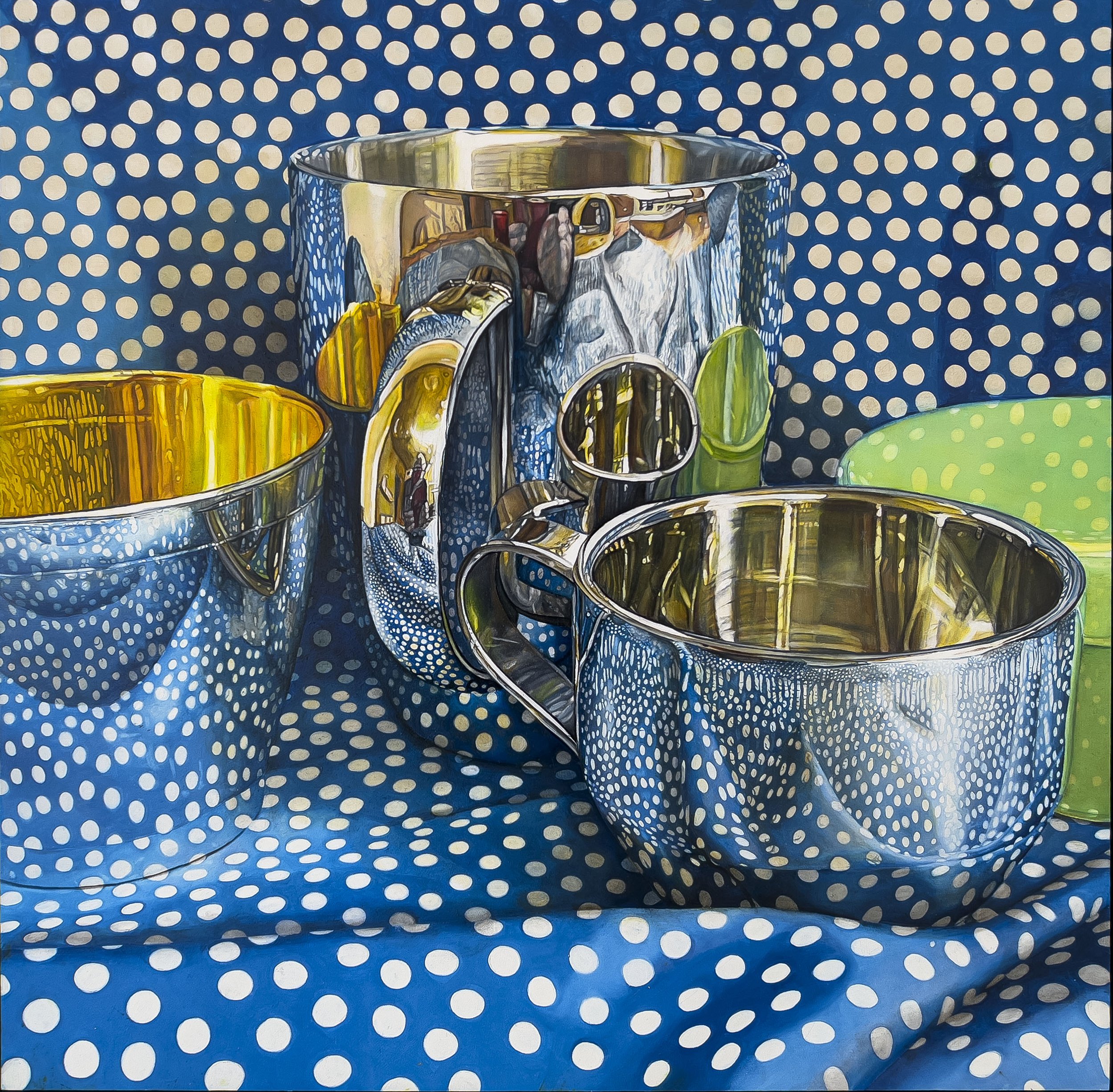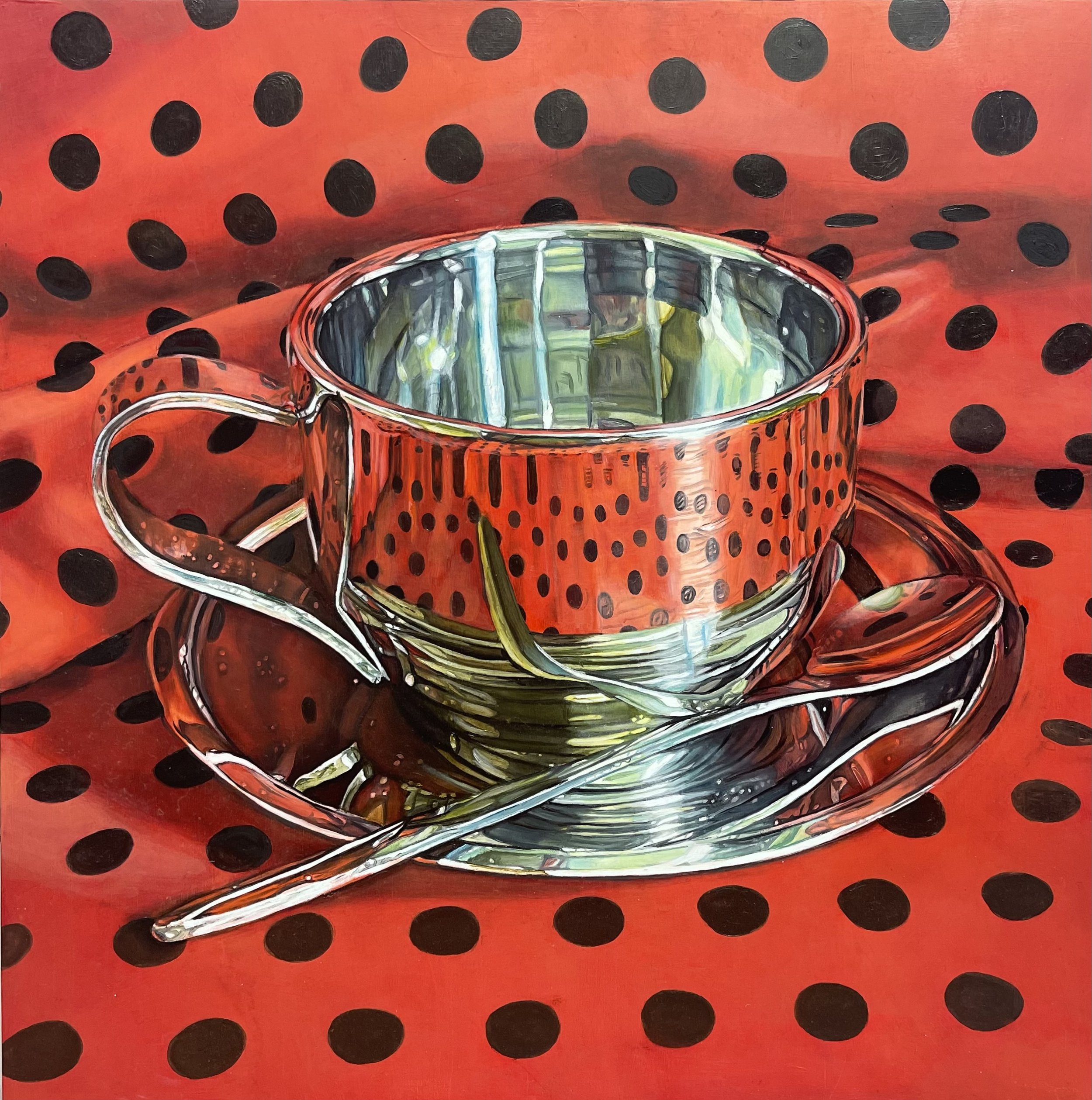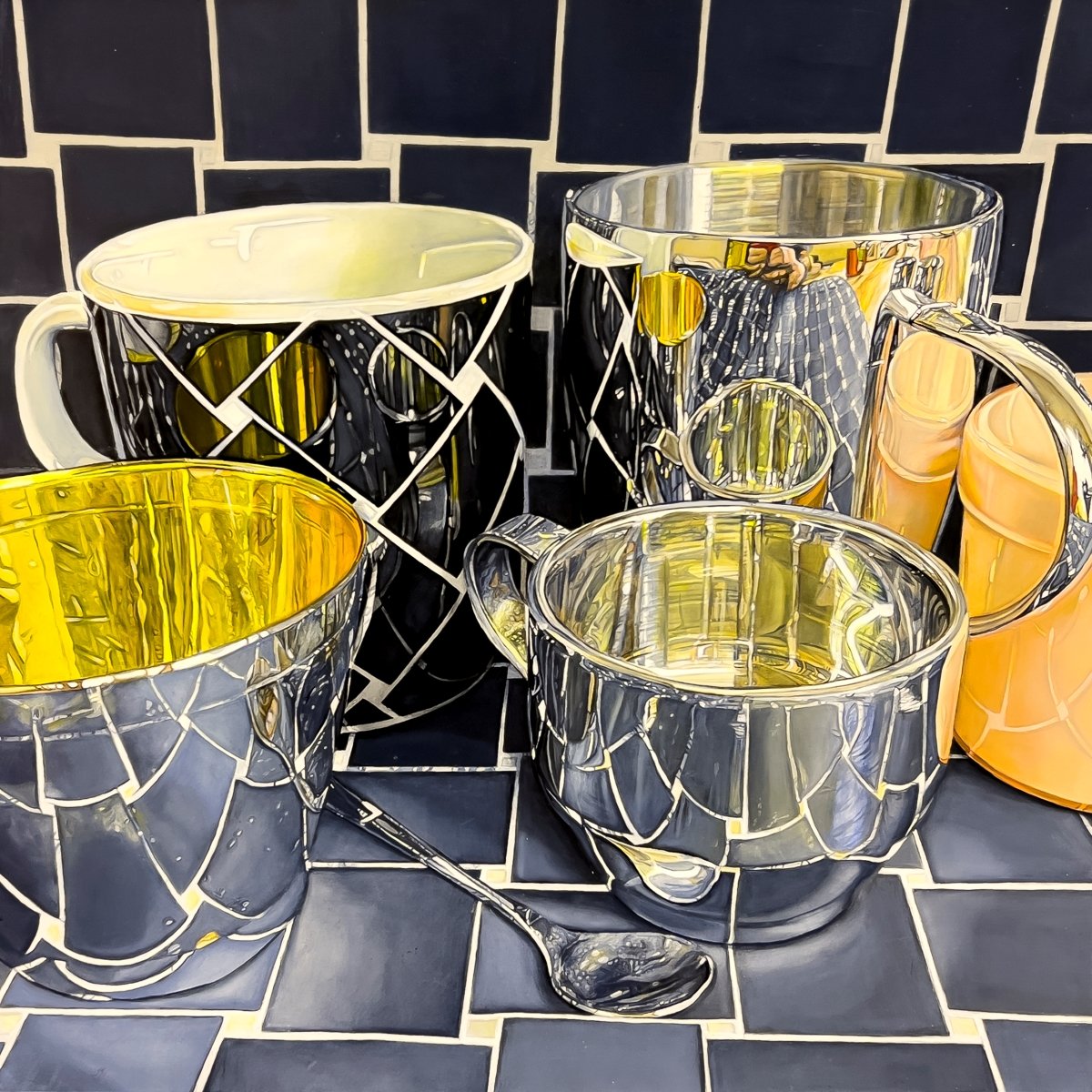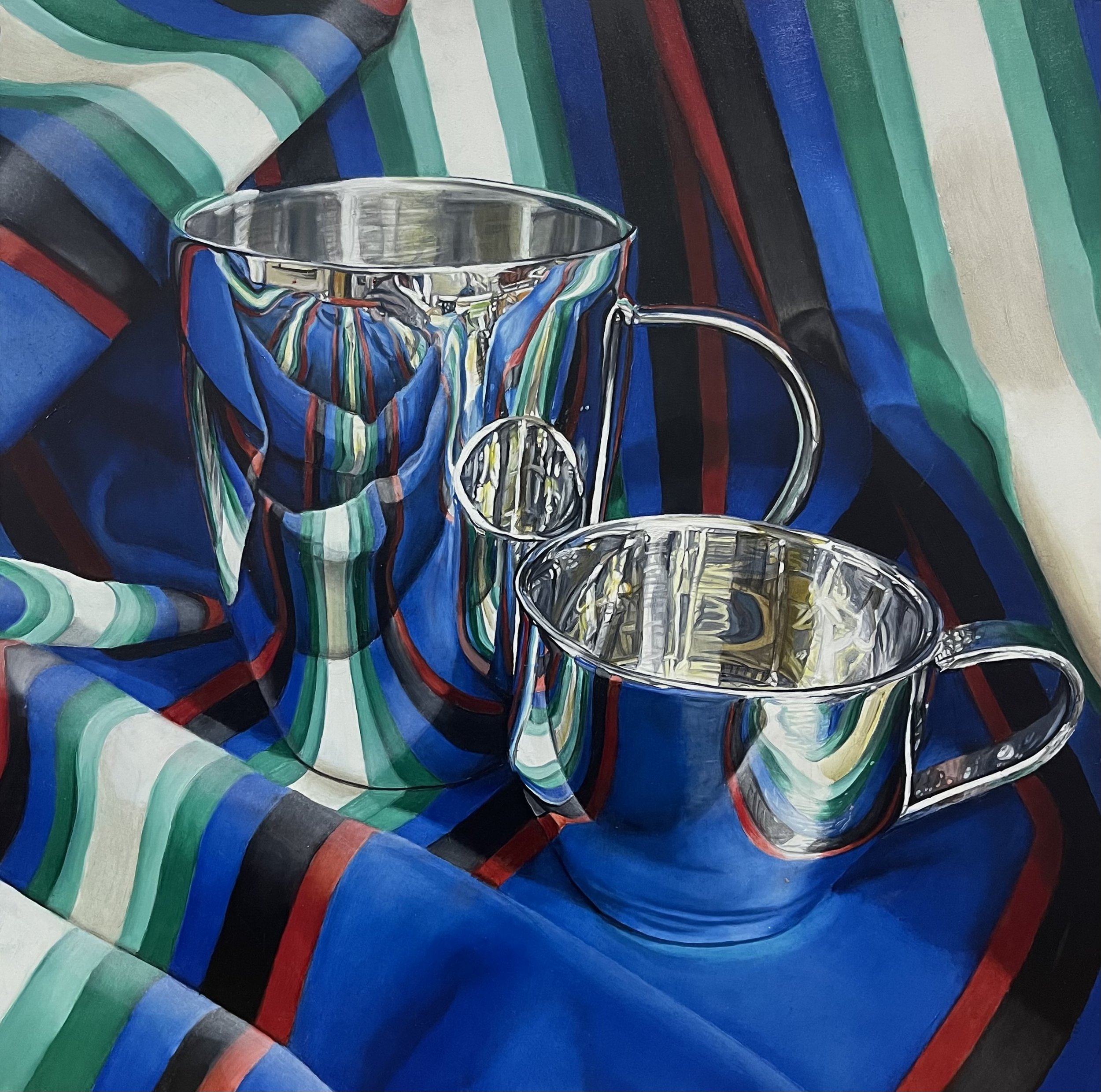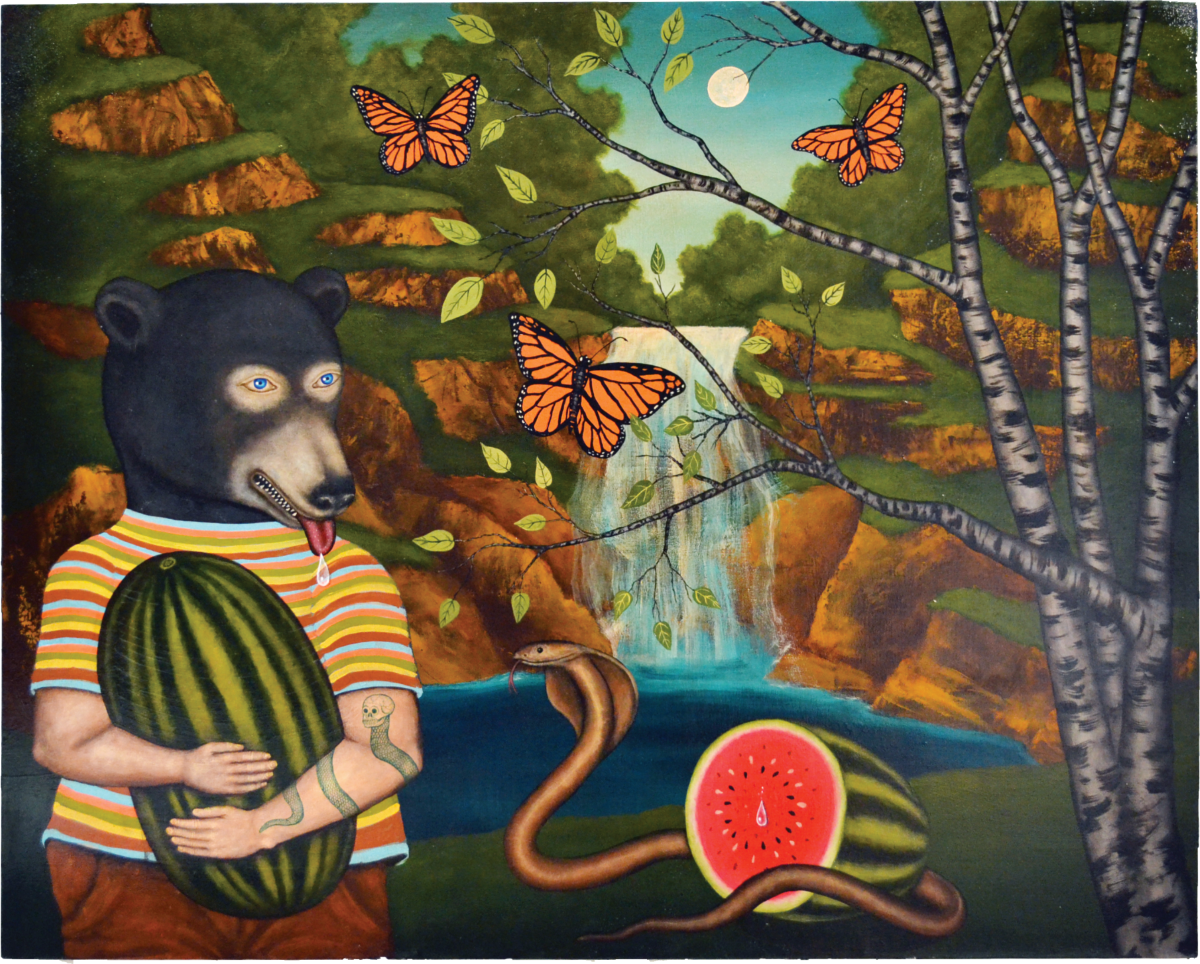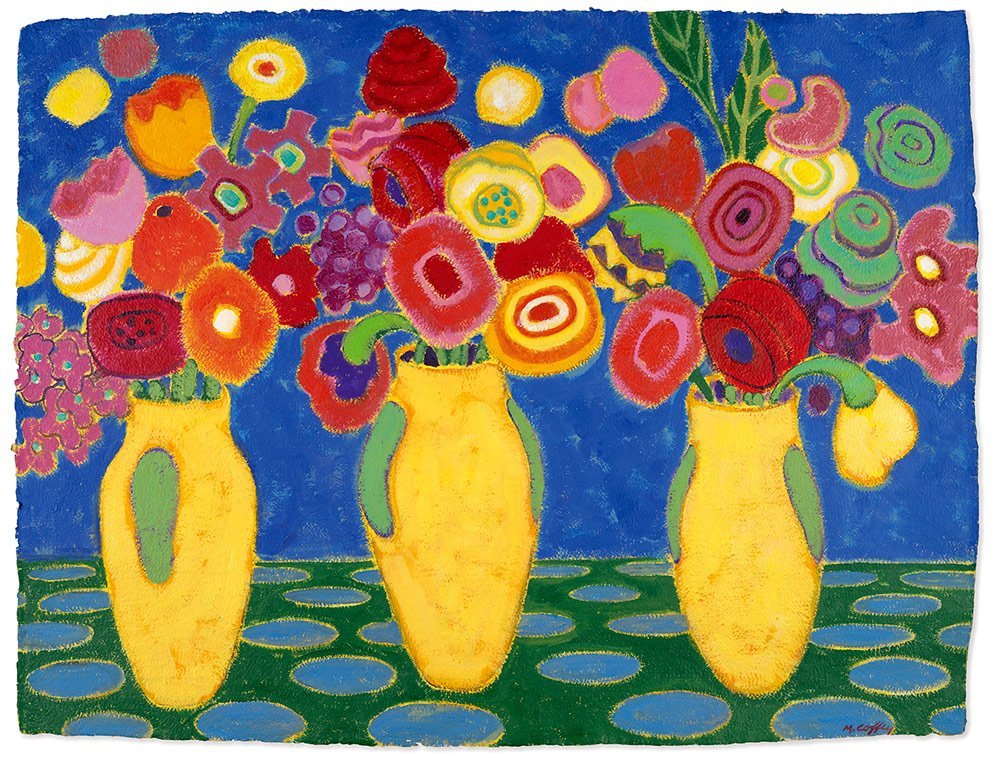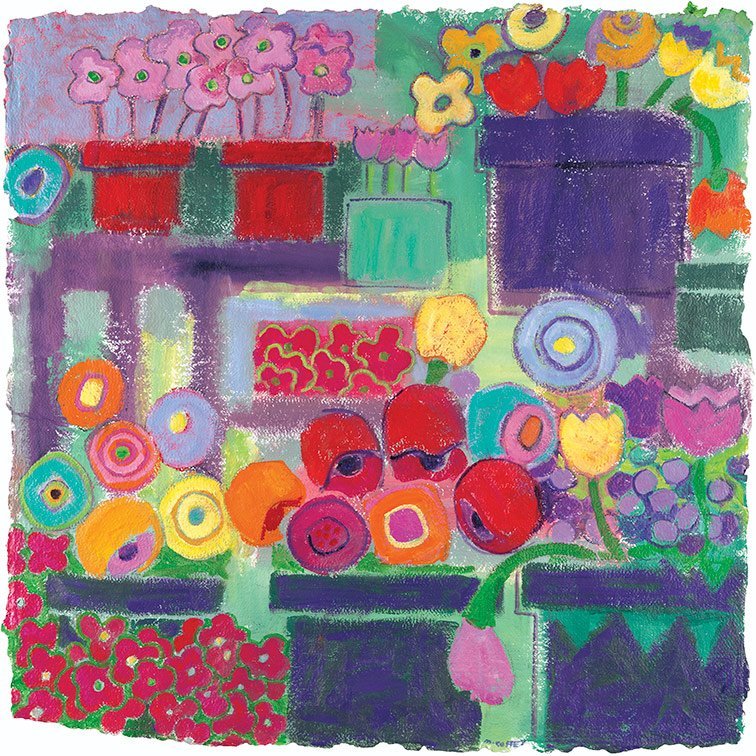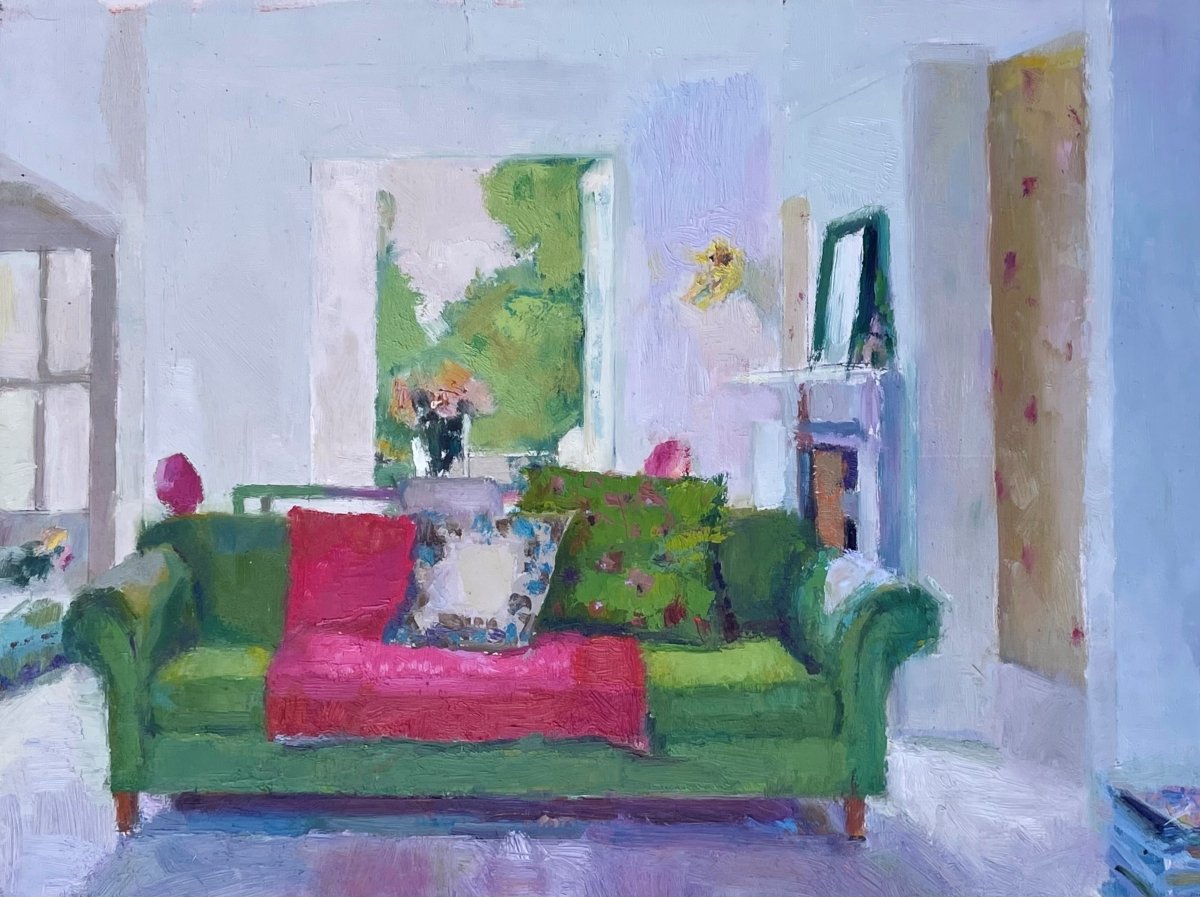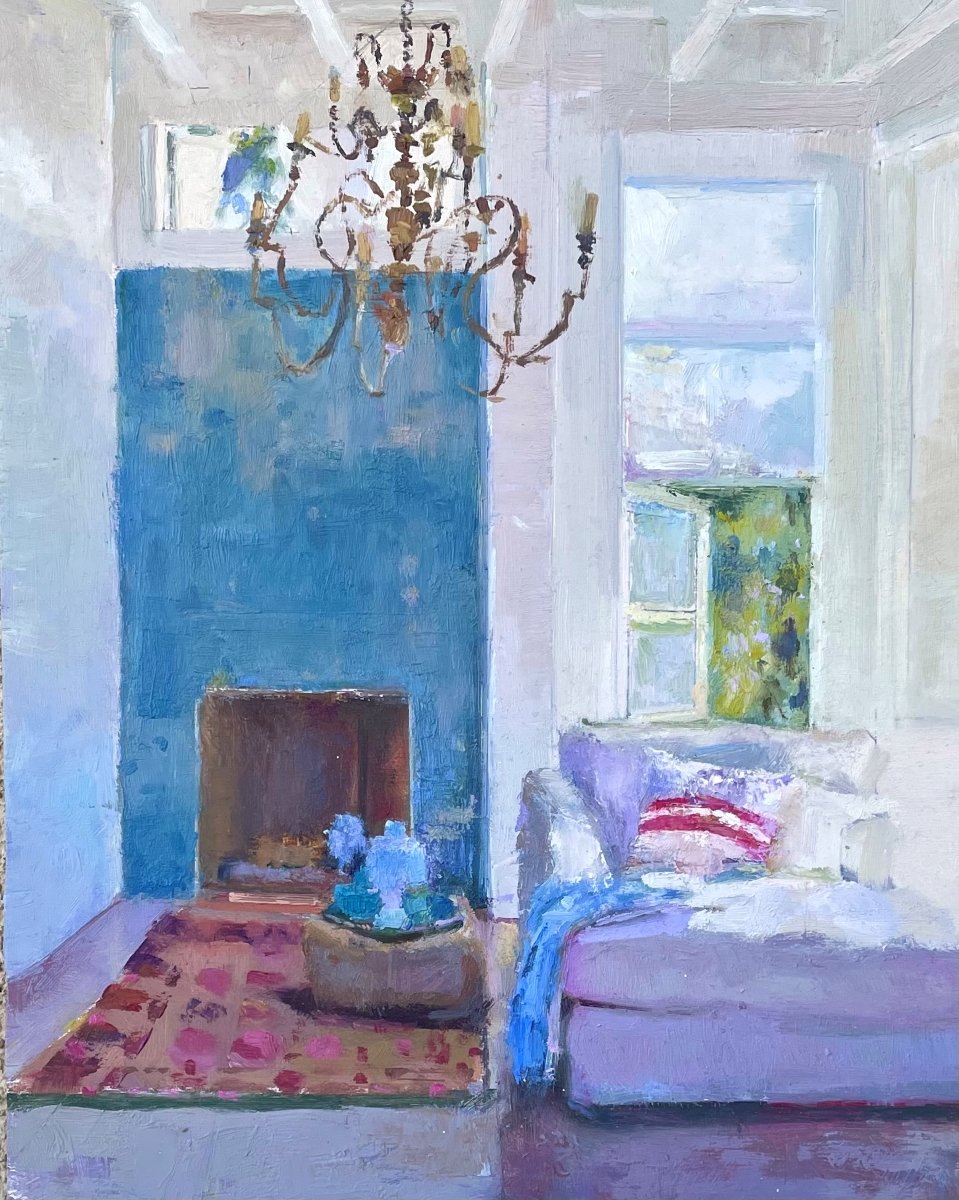JEANETTE PASIN SLOAN is recognized to her complex still life paintings that combine multiple patterns and objects into one flowing image. Each painting, blending classic still life techniques with abstraction, is more than just the items she has combined. It is a story of the reflections and the light, and how they take on a world of their own. Through July 9, Tory Folliard Gallery in Milwaukee, Wisconsin, will host a new exhibition by the artist that includes some of her latest compositions.
There is a sense of harmony to Pasin Sloan's chaotic, yet meticulous paintings that comes from the weeks, sometimes months, of planning. The ideas for the works first percolate in her head, and then she begins to arrange the objects in real life. Pasin Sloan takes many photographs at slightly different angles and views, looking for the patterns she has envisioned in her mind. Once the ideal composition is found, it's transferred to canvas.
The close crop of every work adds to the design elements, such as in Matins, which shows four mugs of various sizes and a spoon resting on a black and white tiled countertop. There is a yellow container off to the right. The dizzying display of the black and white makes simple yet near optical illusions along the mugs where each sharp corner becomes slightly curved.
My Cup Runneth Over could be seen as the cup, saucer and spoon taking center stage, except the red fabric with black polka dots is the real star as it folds, reflects and plays. The painting Duet is also simple in nature Sloan takes many photographs at slightly different angles and views, looking for the patterns she has envisioned in her mind. Once the ideal composition is found, it's transferred to canvas. The close crop of every work adds to the design elements, such as in Matins, which shows four mugs of various sizes and a spoon resting on a black and white tiled countertop. There is a yellow container off to the right. The dizzying display of the black and white makes simple yet near optical illusions along the mugs where each sharp corner becomes slightly curved. My Cup Runneth Over could be seen as the cup, saucer and spoon taking center stage, except the red fabric with black polka dots is the real star as it folds, reflects and plays. The painting Duet is also simple in nature with the two items, but this time the stripped cloth ripples and rolls and blends the surface of the mugs into the foreground and background.
In Handle with Care polka dots are at play again, but a green bowl interrupts the formulaic scene and draws the eye to the reflection in the tallest mug. What's revealed in the reflection more noticeably is not just the reflection of the patterns and objects, but also the scene that would be behind the viewer if they were standing right in front of the arrangement. That reflection of what's beyond can be found in many of Pasin Sloan's paintings perhaps as a subtle hint to the artistic process.
